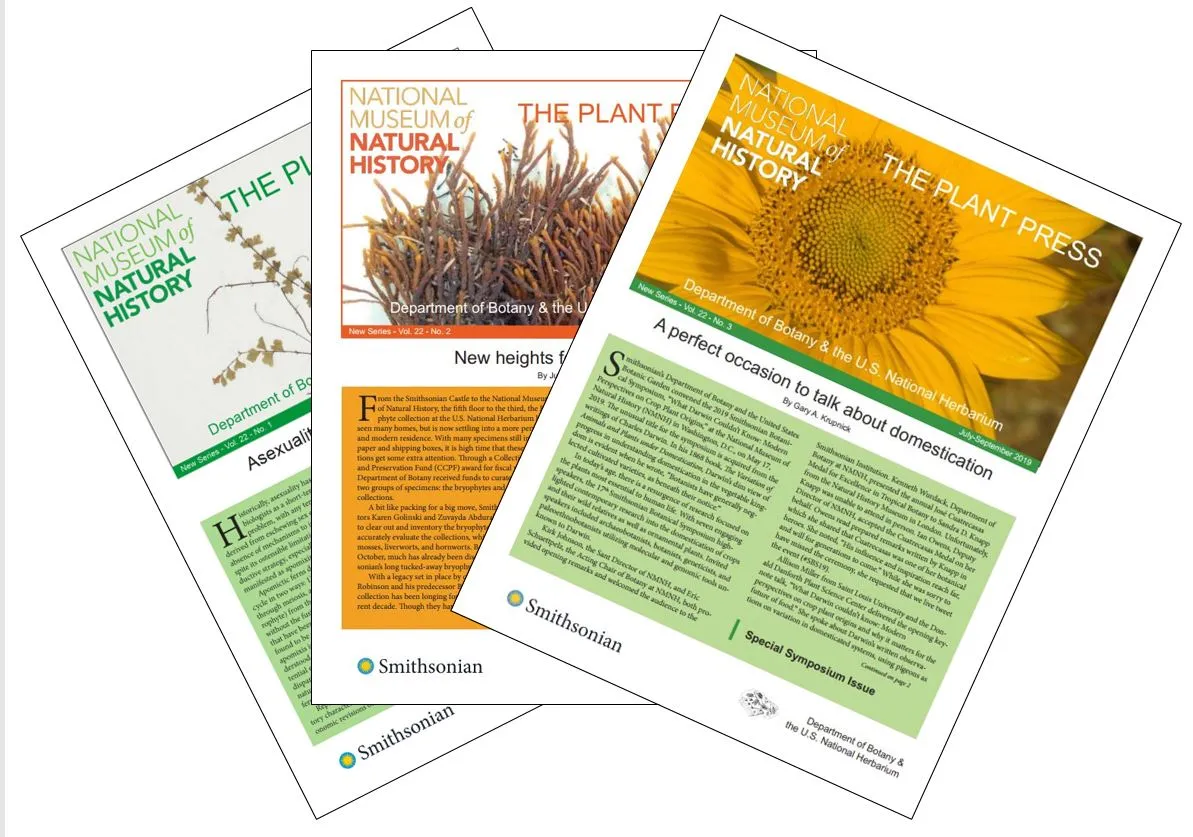Image
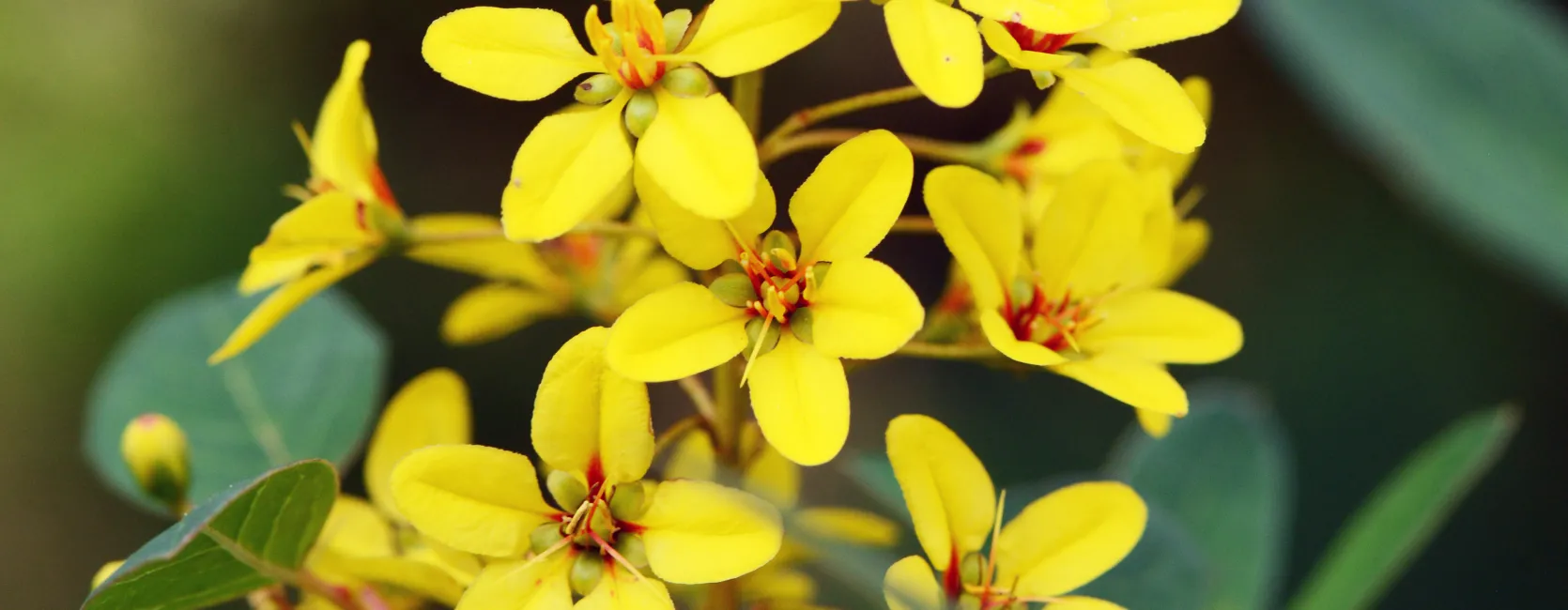

Botany Seminar Series
The NMNH Department of Botany seminar series features guest speakers presenting their current research. Topics range from taxonomy, evolution, and systematics to plant ecology and conservation biology. All seminars are typically held on Thursdays at 1pm Eastern (unless otherwise noted). If you are interested in receiving notices of upcoming seminars and web links to the virtual presentations, subscribe to the Botany Seminar email list by sending your name, affiliation, and email address to Gary Krupnick.
Upcoming seminars
No current seminars are planned. Please check back soon.
---------------------------------------
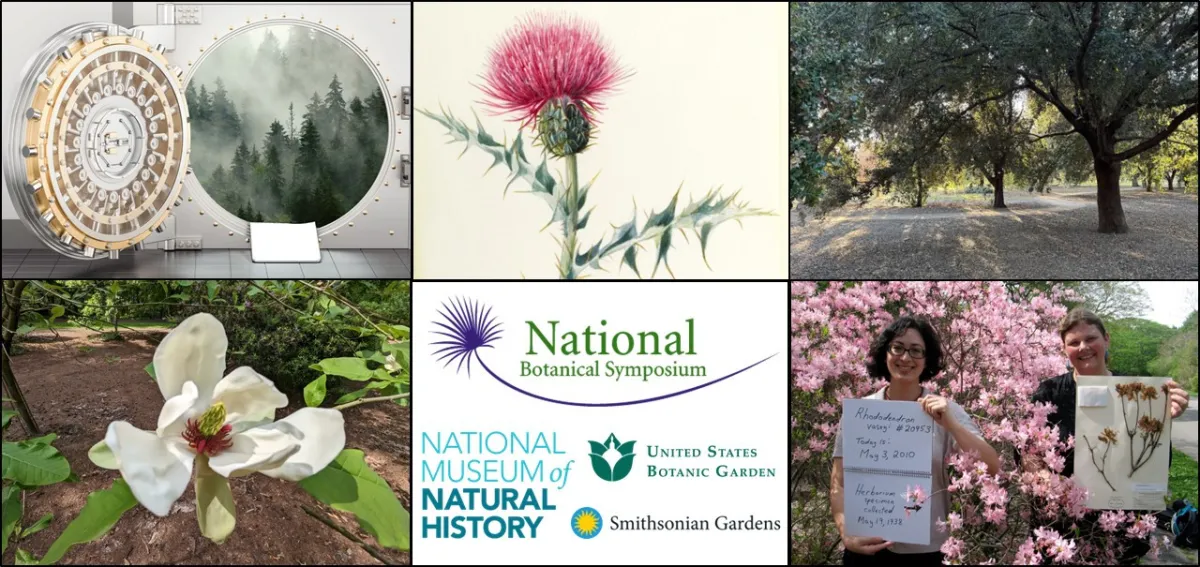
The Smithsonian's National Museum of Natural History Department of Botany, the United States Botanic Garden, and Smithsonian Gardens held the 22nd National Botanical Symposium (formerly Smithsonian Botanical Symposium), "The Future of Collections-Based Plant Science," on May 16, 2025.
What does the future hold for herbaria and botanic gardens as the goals, visions, and objectives of these institutions adapt to a modern era while stewarding important preserved and living collections? Collections-based science, whether it is based on preserved plant specimens, living collections, or both, has entered a new age as novel tools, such as artificial intelligence (AI), machine-learning, and genomics are being used more broadly by botanists. Contemporary plant science now involves big data and is highly interdisciplinary. International networks and collaborations with a diversity of people and organizations have expanded the reach, breadth, and depth of botanical research. Botanists, horticulturists, conservation biologists, social scientists, community members, and artists are collaborating to advance our understanding of plants and the application of this knowledge in their respective fields. This symposium brought fresh thought into a new vision for collections-based plant science.
More information about the symposium is available here.
---------------------------------------
Digitized!
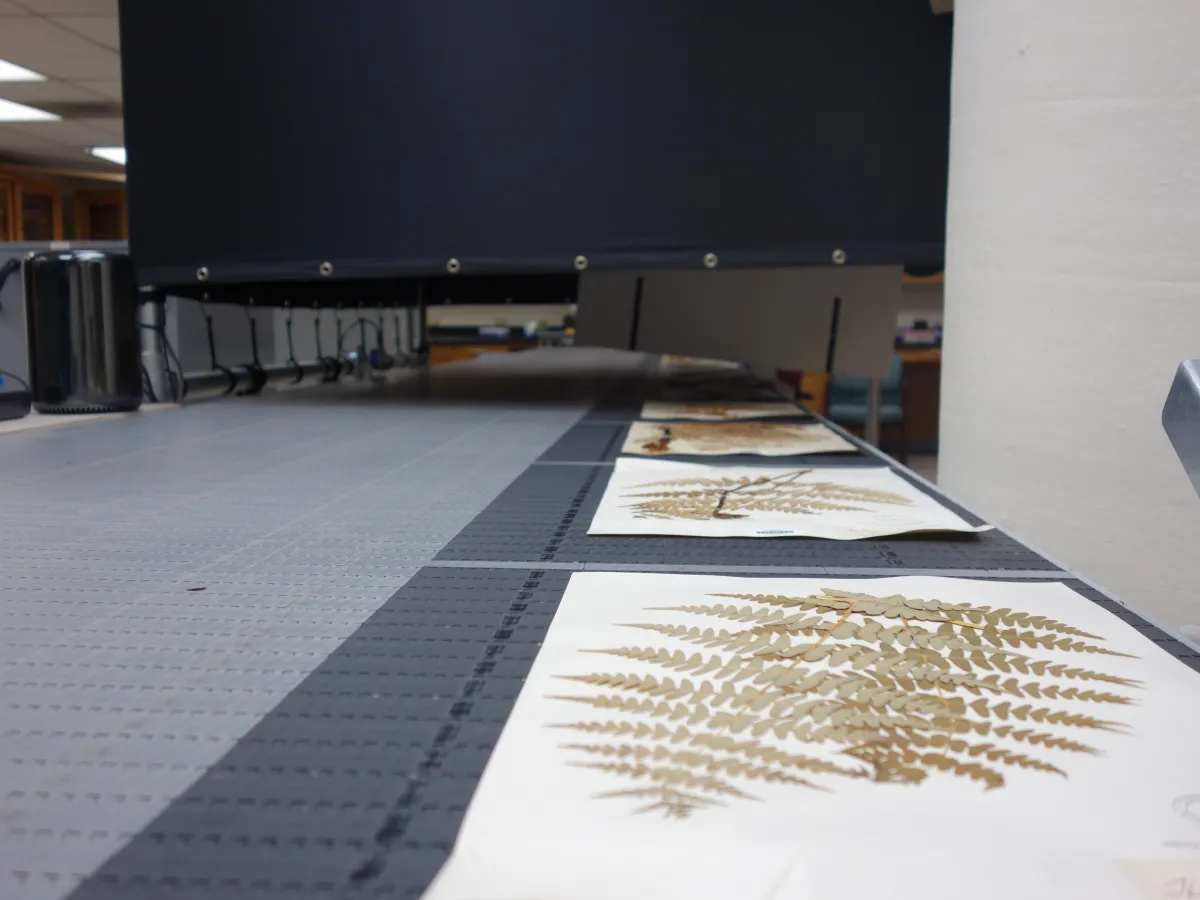
The Department of Botany is happy to announce that the US Herbarium is completely digitized as of May 2022. The seven year effort to digitize the herbarium through a digitization conveyor system has resulted in 3.8 new specimen images, 2.8 new label transcriptions, and over 80,000 new taxonomic names added to the data catalog.
Women Support Staff of the United States National Herbarium
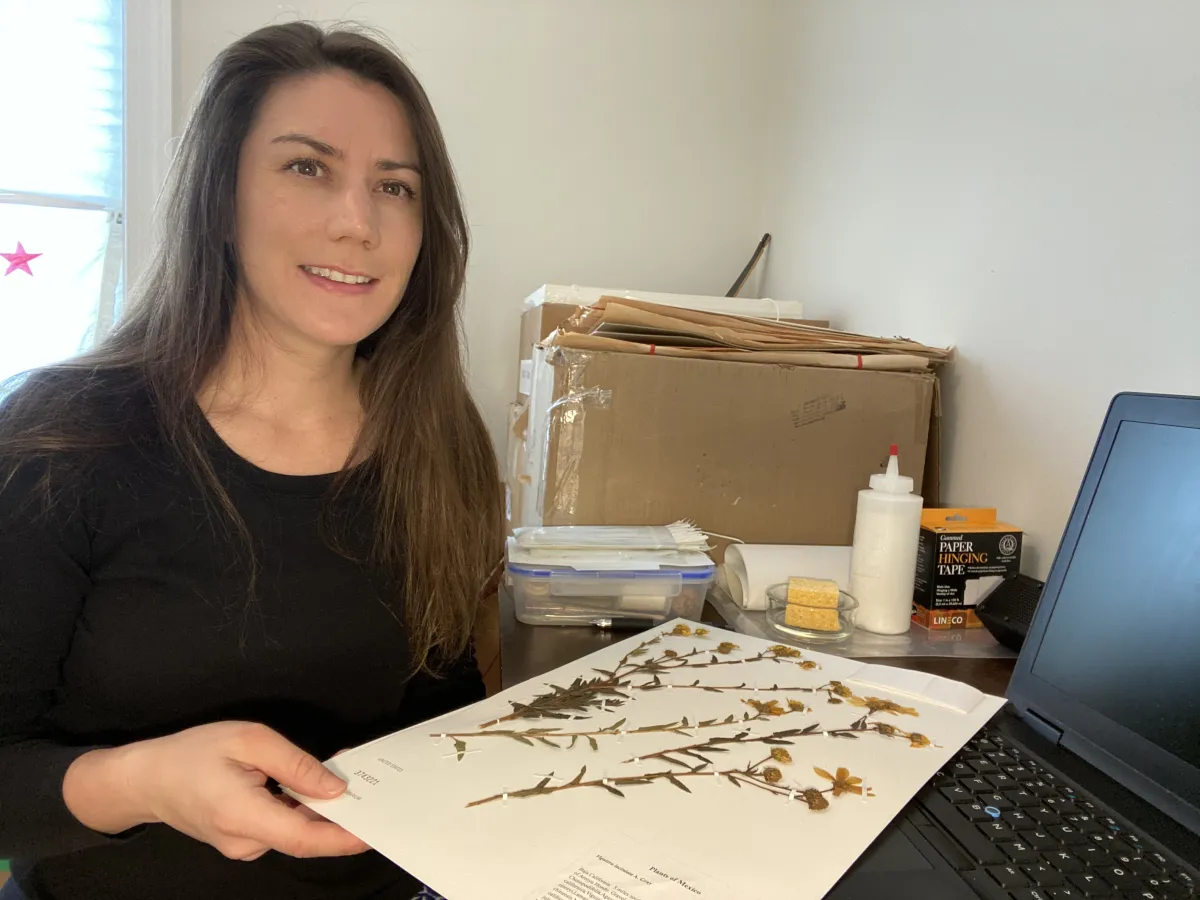
Women have a significant presence in museum work most notably in illustration, research assistance, and collection management. More recently collections work has expanded to include digitization, outreach, administration, and library and information resourcing, as well as fulfilling everyday department tasks.
Women Support Staff of the USNH
Women of the United States National Herbarium
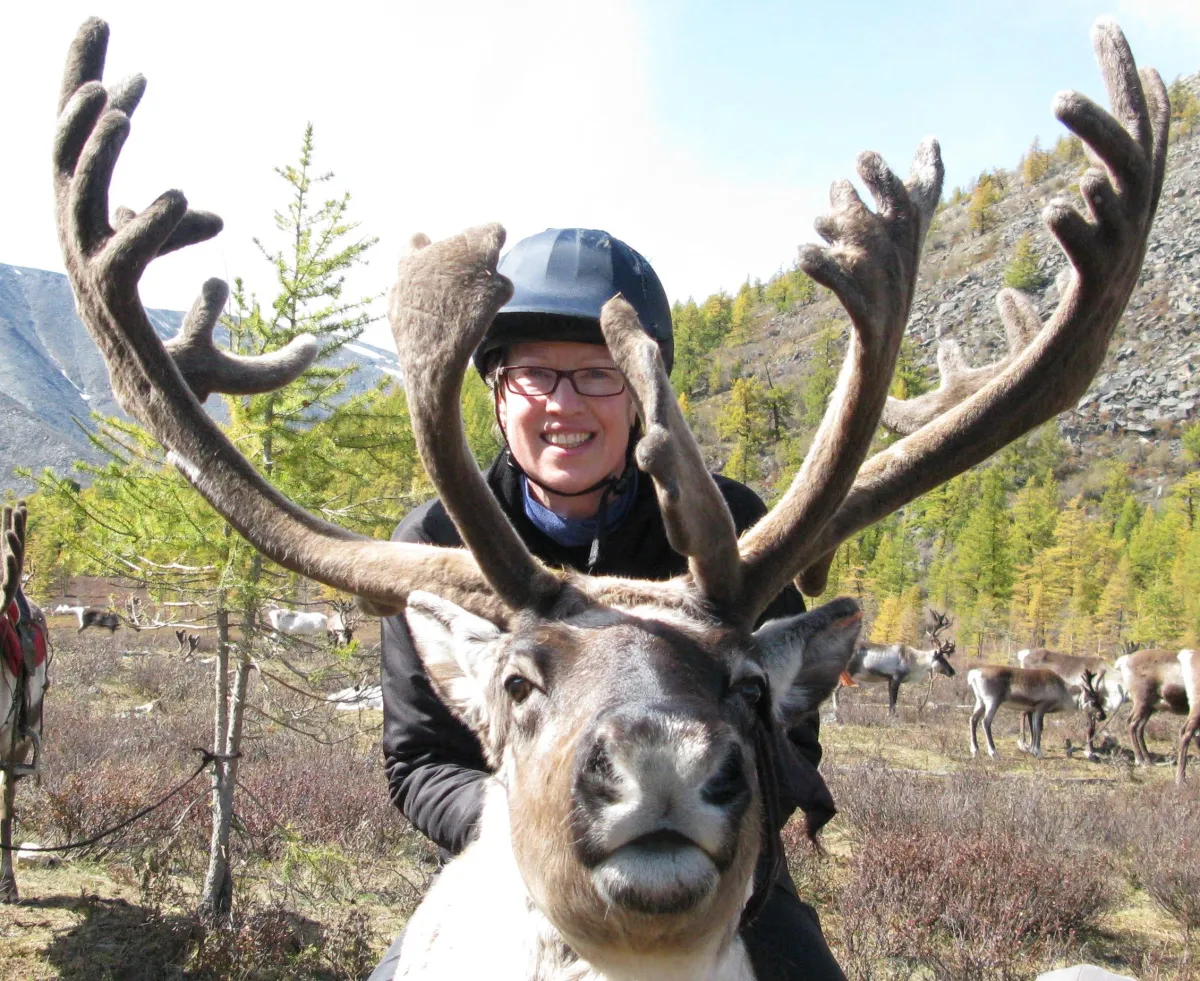
Historically, botany has been one of the few attainable fields in science for women, most commonly in the areas of scientific illustration and field collection (assisting male botanists who oftentimes were their husbands). In the US National Herbarium, women have figured prominently. Here we spotlight many of our best from past and present.
Women of the US National Herbarium
Plants Are Cool Too!
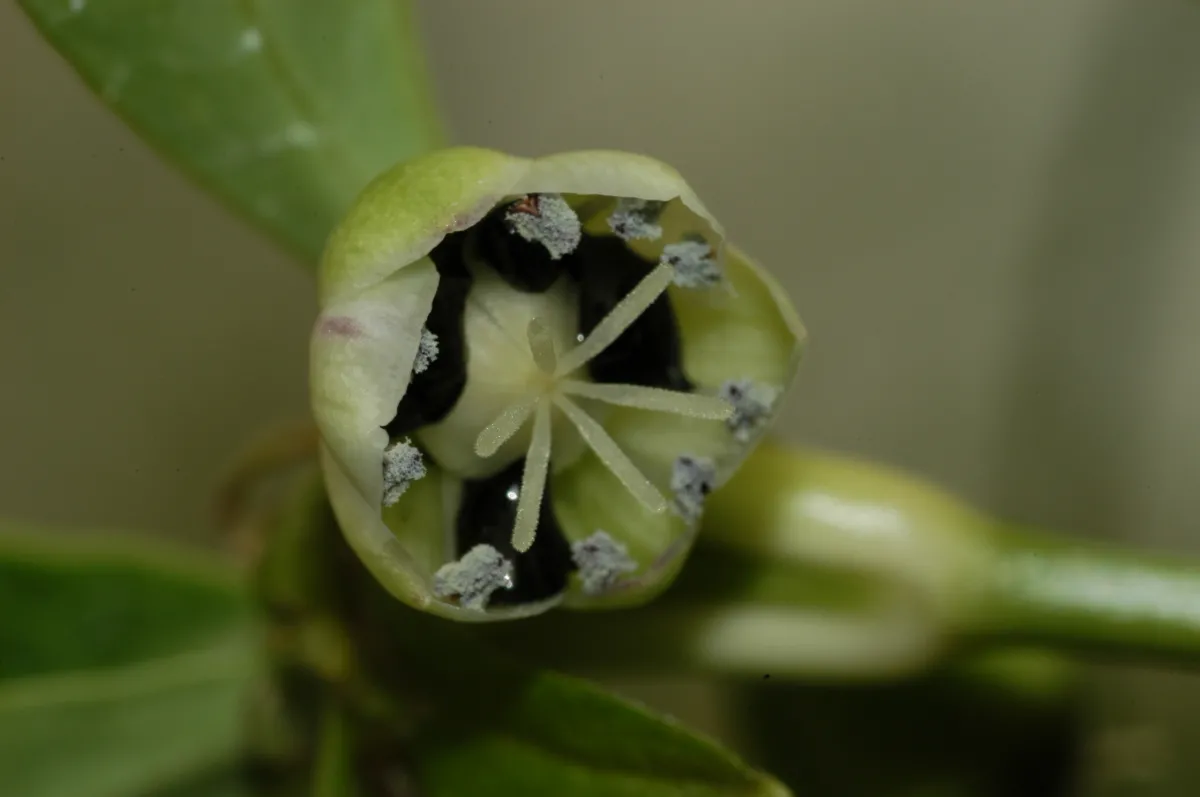
Chris Martine's series "Plants are Cool Too" presents a behind the scenes in Kauai to look at how the National Tropical Botanical Garden is leading the charge to save rare plants and protect tropical biodiversity. In a second episode, a group of passionate plant people are working to save some of the rarest plants on the archipelago -- and tell us why we need a new generation of biodiversity lovers to help battle the extinction crisis. Our own Warren Wagner is spotlighted in this series.
Newsletter -- The Plant Press is the quarterly newsletter from the Department of Botany and the U.S. National Herbarium. The purpose of The Plant Press is to provide information about the activities of the Department. Included are articles about staff research and travel, visitors, new publications, and plant conservation highlights.
